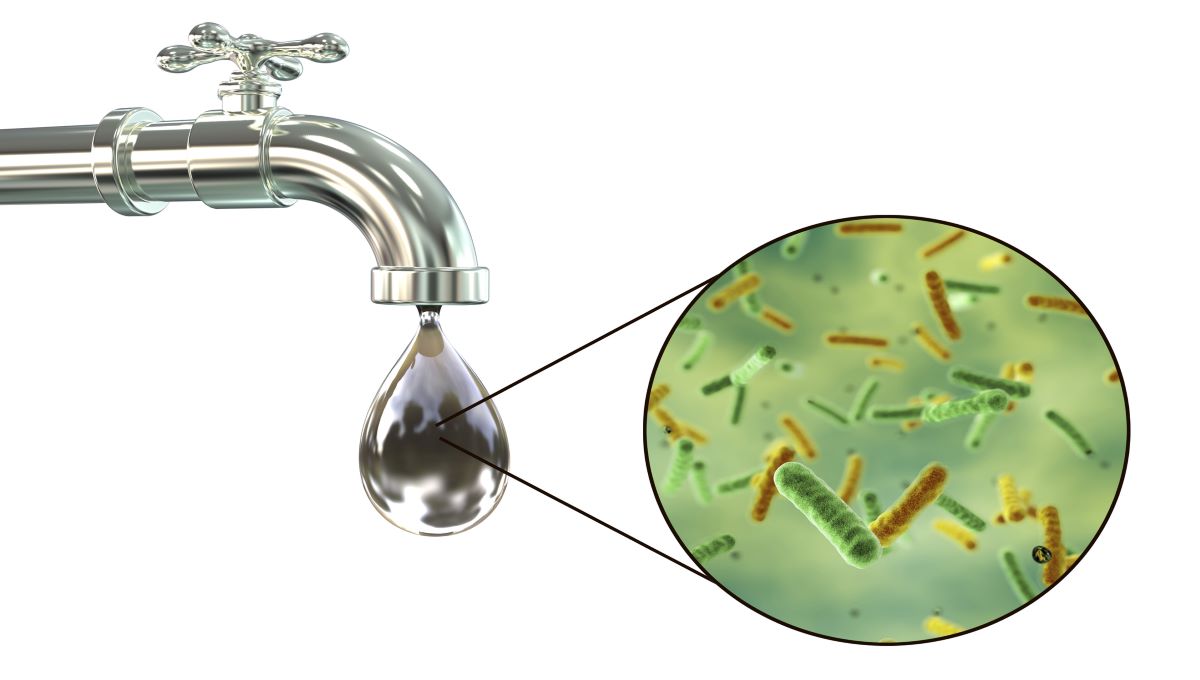China records Salmonella outbreak from contaminated water - Food Safety News

A waterborne typhoid fever outbreak sickened more than 20 people in China earlier this year.
The outbreak involved 23 patients in an apartment in Changping District in Beijing and was caused by extensively drug-resistant (XDR) Salmonella Typhi through a polluted water supply.
It was the first report of a waterborne outbreak caused by XDR Salmonella Typhi in the country, according to a study published in China CDC Weekly.
In early February, four clinically diagnosed typhoid cases were reported by health officials. Of the 23 sick people, illness onset date ranged from Jan. 22 to Feb. 13, with the peak on Feb. 4. Eight cases were male and all were adults, with an age range between 22 and 45, and median of 30 years old. They had diverse occupations, but none worked in the food sector. Symptoms mainly included a high fever and diarrhea.
Sick people did not drink raw water, but used tap water to wash vegetables and brush their teeth.
Sewage leak suspected
Residents reported that household water had an odor for about half a month in late December 2021, and some said there was disruption of supply and transient muddy water in mid-January 2022.
Researchers learned that sewage pipeline reconstruction work was carried out in December 2021 near the apartment, and this pipeline was about 1 meter away from the branch well which supplied water for the apartment.
Water testing showed very high counts for E. coli and total coliform in two samples of tap water in cases' rooms, indicating contamination, but no sample was positive for Salmonella. Further testing isolated one Salmonella Typhi strain from the outlet of a storage tank.
Control measures included health education of the public and emphasis on chlorination of drinking water and sanitation. The water conduit for the apartment was also replaced. The water tank and pipeline network was cleaned and disinfected.
Five Salmonella Typhi isolates were resistant to ampicillin, chloramphenicol, trimethoprim sulfamethoxazole, aztreonam, streptomycin, fluoroquinolones, third and fourth-generation cephalosporins, and showed extended-spectrum β-lactamase (ESBL) production, but were sensitive to azithromycin, imipenem, and meropenem, leaving limited treatment options.
Researchers said it was crucial that relevant governmental agencies provided safe and hygienic potable water, strengthened supervision on water quality, and educated people on good hygiene habits.
"In addition, with narrow treatment options for typhoid fever, XDR typhoid itself should also attract great attention, which may lead to treatment failure, prolonged hospitalization, as well as recurrent and extensive transmission of the disease. Therefore, it is necessary to track the source of the XDR strains and to strengthen monitoring their spread through laboratory and extensive epidemiological investigations in the future."
Cholera outbreaks
Water was also the suspected source in two Cholera outbreaks in Guangdong in 2020 and 2021.
The gastroenteritis outbreak in 2020 occurred in September at a college with 137 cases. Vibrio cholerae strains were isolated from 32 samples.
In 2021, another outbreak that affected 79 people occurred in late September at a different but nearby college. A total of 34 swabs from patients were positive for Vibrio cholerae. In both outbreaks, water was believed to be the infection source but no Vibrio cholerae was isolated from water samples.
As the outbreaks were reported in two successive years in almost the same place at almost the same time, scientists said enhanced surveillance, which focuses on food and environmental water, should be carried out next year.
The successive cholera outbreaks were caused by non-toxin-producing serogroup O5 Vibrio cholerae, according to the study.
Researchers said the current strategy for cholera prevention and control in China should be adjusted and attention should also be paid to non-O1 and non-O139 Vibrio cholerae.
(To sign up for a free subscription to Food Safety News, click here.)
Comments
Post a Comment